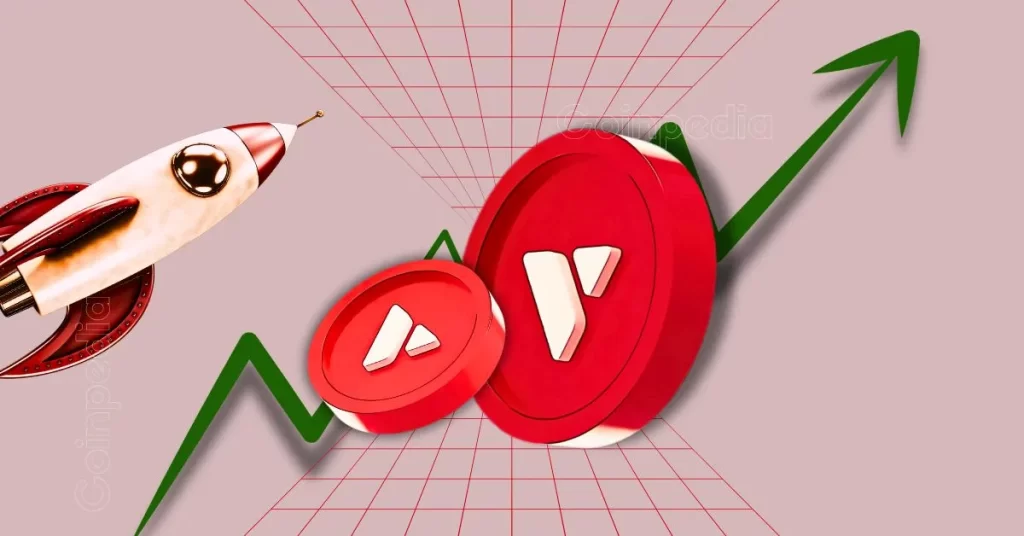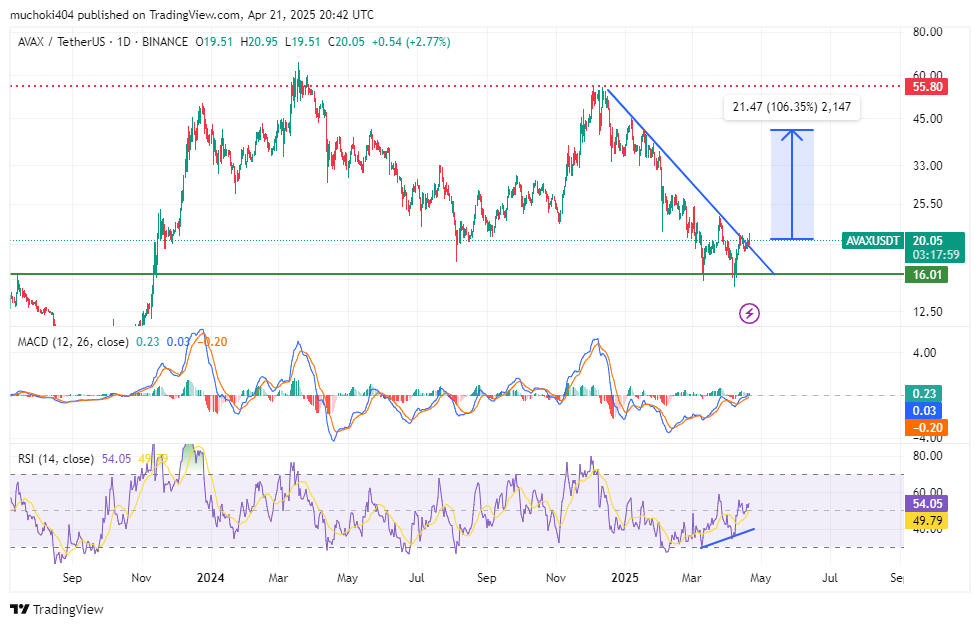
The post Avalanche Card Unveiled: Will It Spark Bullish Momentum for AVAX? appeared first on Coinpedia Fintech News
- The Avalanche ecosystem has grown significantly in the past year backed by institutional investors seeking to tokenize RWAs.
- AVAX price has already broken out of a multi-week correction phase, amid rising crypto bullish momentum.
After months of meticulous research and development, the Avalanche Foundation, in close collaboration with Rain, a Visa-powered crypto-backed payment card, launched the Avalanche Card on Monday, April 21, during the mid-North American trading session.
The Avalanche Card allows holders to access their crypto assets – initially including AVAX, USDC, and USDT – seamlessly around the world either online or in-store. The Avalanche Card is linked directly to a user’s self-custody wallet and will offer no conversion fees.
Avalanche‘s Explosive Growth
The Avalanche network has grown to a vibrant web3 ecosystem, with more than $1.23 billion in total value locked and over $1.7 billion in stablecoins market cap. In the past two years, the Avalanche network has attracted significant attention from institutional investors seeking to tokenize real-world assets.
For instance, BlackRock and Securitize launched the BUIDL fund on Avalanche Network and tokenized over $500 million. Citibank has in the past been exploring different blockchain use cases on the Avalanche network including tokenization of RWAs.
AVAX Price Analysis
Since the beginning of 2025, AVAX price has been trapped in a correction mode, catalyzed by macroeconomic factors and low demand for altcoins. However, the large-cap altcoin, with a fully diluted valuation of about $14.3 billion and a 24-hour average trading volume of around $343 million, has potentially reached its correction bottom and is ready for market reversal.

In the daily timeframe, AVAX price has already broken out of a falling logarithmic trend established YTD. Most importantly, AVAX price has already rebounded from a crucial support level of around $16, which resulted in a double bottom coupled with a bullish divergence of the daily Relative Strength Index (RSI).
In case of further crypto bullish sentiment, AVAX price is well positioned to rally at least 106 in the near term to trade above $40.






 (@cosmos)
(@cosmos) 